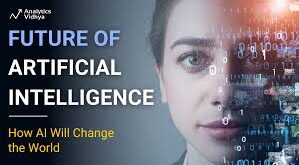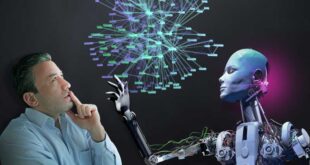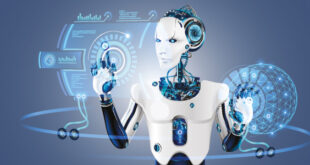Introduction
The future is now, and it’s brimming with potential. As we gaze into the crystal ball of technology, three groundbreaking innovations stand out on the horizon: Artificial Intelligence, the Internet of Things, and Virtual Reality. By 2025, these advancements are not just shaping our day-to-day lives; they’re revolutionizing entire industries and transforming how we interact with the world around us. Curious about what lies ahead? Let’s dive into each of these incredible technologies to see how they will redefine our reality in just a few short years.
Artificial Intelligence (AI):
Artificial Intelligence, commonly known as AI, is revolutionizing how we interact with technology. It refers to systems designed to simulate human intelligence. Think of voice assistants like Siri or Alexa that recognize commands and respond accordingly.
AI permeates daily life in subtle yet profound ways. From personalized recommendations on streaming platforms to smart home devices adapting to our routines, its presence is everywhere.
By 2025, advancements are expected to deepen this integration. Enhanced natural language processing will enable machines to understand context better than ever before. Imagine having conversations with your devices that feel genuinely engaging.
The societal impact could be monumental, transforming industries such as healthcare and finance through predictive analytics and automated processes. As AI evolves, so does its potential for reshaping jobs and enhancing productivity across the board.
– Definition and examples of AI in daily life
Artificial Intelligence (AI) refers to the capability of machines to mimic human intelligence. This technology processes data, learns from it, and makes decisions based on that information.
In our everyday lives, AI is more prevalent than many realize. Think about voice-activated assistants like Siri or Alexa. They help us set reminders and answer questions with remarkable accuracy.
Recommendation systems on platforms such as Netflix or Amazon rely heavily on AI algorithms. These systems analyze user behavior to suggest movies or products you might enjoy.
Moreover, AI plays a crucial role in smart home devices that enhance convenience and security. Thermostats can learn your schedule and adjust temperatures automatically while security cameras use facial recognition for enhanced safety.
From healthcare diagnostics to autonomous vehicles, AI continues to reshape how we live and work without us even noticing its influence daily.
– Predicted advancements and impact on society by 2025
By 2025, artificial intelligence is set to revolutionize numerous sectors. Imagine AI systems that not only assist in decision-making but also learn from human interactions.
In healthcare, AI will likely enhance diagnostics and personalize treatment plans, leading to better patient outcomes. We may see virtual health assistants monitoring our well-being around the clock.
The workplace will experience a transformation too. Automation of routine tasks can free up time for more creative endeavors. This shift could redefine job roles and necessitate new skills among workers.
Education is another area poised for change with adaptive learning technologies powered by AI. These tools can tailor educational experiences to individual needs, making learning more effective and engaging.
As these advancements unfold, ethical considerations will take center stage. Striking the right balance between innovation and responsibility becomes crucial as society navigates this brave new world shaped by technology.
Internet of Things (IoT):
The Internet of Things (IoT) connects everyday devices to the internet, allowing them to send and receive data. Imagine waking up to a smart coffee maker that starts brewing your favorite blend as soon as your alarm rings.
From smart thermostats adjusting room temperatures based on preferences to refrigerators notifying you when you’re low on groceries, IoT is transforming how we interact with our surroundings.
In industries like agriculture, sensors monitor soil health and crop conditions in real-time. This leads to more efficient farming practices and better yields.
By 2025, experts predict significant growth in IoT applications across various sectors. Healthcare will see remote patient monitoring systems becoming standard, making healthcare more accessible than ever before. As cities become smarter through connected infrastructure, urban living will evolve dramatically.
With this technological shift comes increased convenience but also concerns about data privacy and security that need addressing.
– Explanation of IoT and its applications
The Internet of Things (IoT) refers to the network of interconnected devices that communicate and exchange data over the internet. These devices range from everyday household items to sophisticated industrial machinery.
Imagine your refrigerator sending alerts when you’re low on milk or a thermostat adjusting itself based on your preferences. This seamless connectivity makes our lives more convenient and efficient.
In agriculture, IoT sensors monitor soil conditions in real-time, optimizing crop yields and resource management. Smart cities utilize IoT technology for traffic management, reducing congestion and improving public transport systems.
Healthcare also benefits significantly; wearable devices track vital signs, alerting users about health issues before they escalate. As we embrace this technology, its applications continue to expand across various sectors, illustrating how deeply integrated IoT will become in our daily routines by 2025.
– Expected growth and influence by 2025
The Internet of Things (IoT) is set to explode in the coming years. As more devices connect and communicate, our environments will become smarter and more intuitive.
By 2025, estimates suggest that over 75 billion devices will be linked through IoT networks. This means everything from home appliances to city infrastructure could operate seamlessly together.
Businesses will harness this technology for improved efficiency. Imagine smart factories where machinery predicts maintenance needs or supply chains that adjust in real time based on demand fluctuations.
Consumers can look forward to enhanced convenience too. Smart homes equipped with connected thermostats, security systems, and even refrigerators that track groceries will redefine everyday living.
Healthcare stands on the brink of transformation as well. Wearable devices monitoring patient health can provide real-time data to doctors, leading to quicker interventions and better outcomes. The potential benefits are vast and exciting!
Virtual Reality (VR):
Virtual Reality (VR) immerses users in a 3D environment, creating experiences that feel almost real. It’s not just about gaming anymore; VR is transforming various industries.
In education, students can explore ancient civilizations or conduct virtual science experiments. This hands-on approach enhances learning and retention.
Healthcare is also benefiting from VR technology. Doctors use simulations for training while patients find relief through therapeutic applications. It helps with pain management and mental health treatments by transporting them to serene environments.
The entertainment industry has embraced VR too. Movies and concerts offer immersive experiences that draw audiences into the action like never before.
By 2025, we will likely see even more innovative uses of VR across different sectors. Its potential to reshape how we work, learn, and play continues to expand as technology advances rapidly.
– What VR is and how it’s used in different industries
Virtual Reality (VR) is an immersive technology that transports users into a three-dimensional digital environment. By using headsets and sometimes additional gear, individuals can interact with virtual worlds as if they were real.
In the entertainment industry, VR creates engaging gaming experiences. Players navigate through lifelike scenarios, enhancing their enjoyment. It also offers cinematic adventures that put viewers inside the action.
Education has embraced VR for its potential to create interactive learning environments. Students can explore historical events or complex scientific concepts in ways traditional methods can’t match.
Healthcare utilizes VR for training medical professionals. Surgeons practice intricate procedures in a risk-free setting before operating on actual patients. Additionally, it aids in therapy by providing controlled environments for patients to confront fears or manage pain effectively.
The versatility of VR makes it a game-changer across various sectors, continually pushing boundaries and expanding possibilities.





